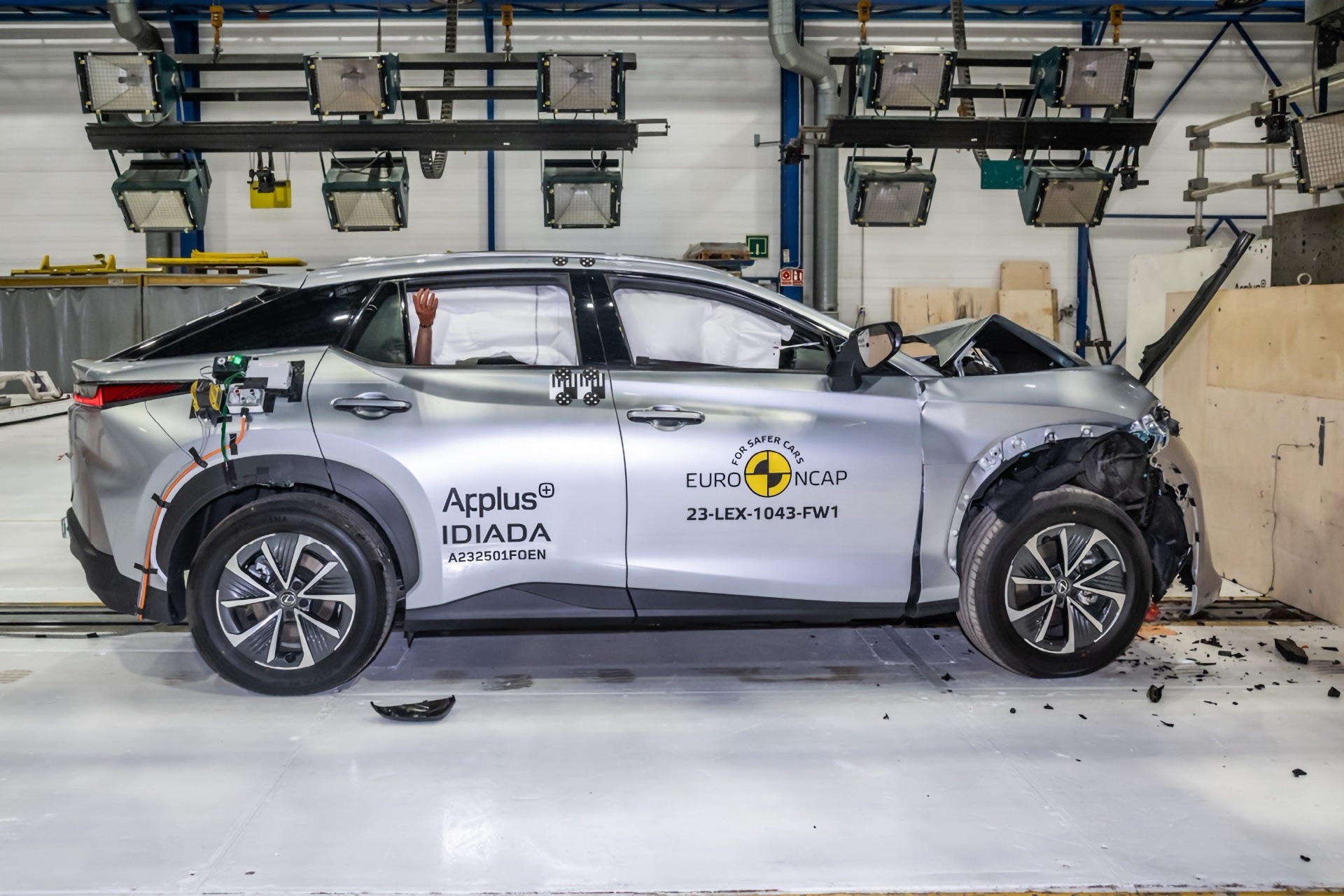ANCAP says the first safety rating for a vehicle tested against its new 2023 to 2025 criteria, the battery electric Lexus RZ, provides a strong demonstration of what can be achieved with modern safety features and technologies. It achieved the maximum five-star ANCAP safety rating based on testing of a European model by Euro NCAP.
The RZ scored 87 per cent for adult occupant protection, 89 per cent for child occupant protection, 84 per cent for vulnerable road user protection, and 84 per cent for safety assist.
It also satisfied the cyclist anti-dooring requirements, demonstrating its ability to warn occupants of an approaching cyclist when exiting the front and rear doors, and to prevent door opening if needed. Vehicle submergence requirements for door and window opening were also met.
The RZ also demonstrated good performance in the new lane support and autonomous emergency braking scenarios, including those with a stationary and braking motorcycle and in intersection turning scenarios involving an oncoming motorcycle.
Under the 2023 criteria, score thresholds of 80 per cent (adult occupant protection), 80 per cent (child occupant protection) and 70 per cent (safety assist) continue to apply for a vehicle to be eligible for a five-star rating in 2023. However, the five-star threshold for vulnerable road user protection has increased to 70 per cent from the previous requirement of 60 per cent. Threshold increases for all other star rating levels within the vulnerable road user protection pillar were also introduced.
Additionally, the breadth of safety aspects and test scenarios has expanded, along with adjustments to the distribution and quantum of available points.
Key testing changes include:
- Vehicle structure: There is now a greater focus on vehicle-to-vehicle crash compatibility through an increased penalty of eight points (previously a four-point penalty).
- Restraint design: Now requires improved performance of onboard restraint systems for front and rear seating positions through a reduced tolerance for chest injury in the full width frontal test.
- Motorcyclist detection: A vehicle’s ability to detect and avoid collisions with motorcycles through autonomous emergency braking, blind spot monitoring, and lane support functionality is now assessed.
- Child occupant and pedestrian protection: In-cabin systems that detect and notify the driver of a child inadvertently left inside a vehicle are now being evaluated, along with AEB systems that detect and react to child pedestrians when reversing
- Rescue and extrication: ANCAP is now checking for vehicle submergence egress capability – the ability of an occupant to escape from a sinking vehicle
- Driver monitoring systems: Direct driver monitoring functionality that monitors eye movements for distraction, fatigue, and unresponsiveness now also forms part of the assessment.

